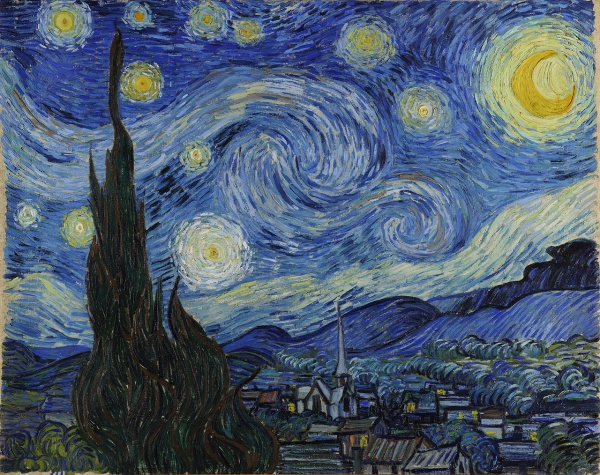Facts About The Starry Night
*"The Starry Night"* is an iconic oil on canvas painting by Vincent van Gogh, a renowned Dutch Post-Impressionist artist, completed in June 1889. This masterpiece exquisitely renders the view from his room at the Saint-Rémy-de-Provence asylum, enriched by a touch of imagination that introduces a quaint village to the scene. Since 1941, it has been a treasured part of the collection at the Museum of Modern Art in New York City.
Van Gogh admitted himself into the asylum following a severe mental breakdown in 1888. During his stay, he produced many remarkable works, with *"The Starry Night"* being among the most celebrated. The painting portrays various elements visible from his window, including cypress trees and rolling hills, depicted at different times of day and under various weather conditions. Notably, *"The Starry Night"* is the sole nocturnal piece in this series, featuring a mesmerizing swirling sky and symbolic elements such as the cypress trees and the village.
People interpret *"The Starry Night"* in diverse ways. Some view it as a visionary and spiritually inspired work, while others perceive it as a symbolist piece reflecting themes of life, death, and the cosmos. Van Gogh's struggle with mental illness, particularly temporal lobe epilepsy, is often linked to his unique creative process and the painting's distinctive style.
The painting has a fascinating provenance, having changed hands several times before finding its home at the Museum of Modern Art. Scientific analysis has revealed the specific pigments Van Gogh used, such as ultramarine, cobalt blue, indian yellow, and zinc yellow, enhancing our understanding of his techniques.

 Mexico
Mexico